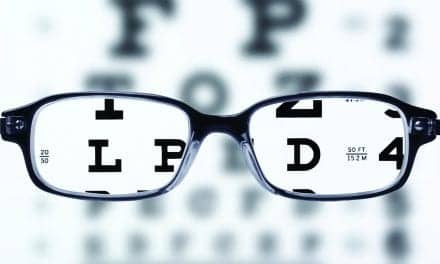Final Word | May 2016 Hearing Review
 As providers of hearing care, we think about communication as an ultimate target for much of what we do. If we haven’t improved a patient’s ability to communicate, we are falling short of an important goal. In more global terms, I get the opportunity to observe and practice better communication in a number of ways. I try to write in a straightforward manner that clearly conveys my message to a range of readers, from audiology students to more seasoned colleagues who have been in the field for many years. To communicate in a way that appeals to both students and industry veterans requires careful thought. When I have the opportunity to speak to groups, I understand that simply talking doesn’t mean that I am communicating. There needs to be the right mix of fresh information and supportive visual elements, as well as a few attention-grabbing anecdotes, to keep the audience engaged.
As providers of hearing care, we think about communication as an ultimate target for much of what we do. If we haven’t improved a patient’s ability to communicate, we are falling short of an important goal. In more global terms, I get the opportunity to observe and practice better communication in a number of ways. I try to write in a straightforward manner that clearly conveys my message to a range of readers, from audiology students to more seasoned colleagues who have been in the field for many years. To communicate in a way that appeals to both students and industry veterans requires careful thought. When I have the opportunity to speak to groups, I understand that simply talking doesn’t mean that I am communicating. There needs to be the right mix of fresh information and supportive visual elements, as well as a few attention-grabbing anecdotes, to keep the audience engaged.
I recently attended a meeting that was a working group of people with different backgrounds working toward a common goal. The topic was infant hearing. Participants included physicians, educators specializing in those with hearing loss, audiologists, parents, and representatives of government agencies. English was a common language, but some of the group without specific training in the topic did not have a full understanding of the terminology, and some were deaf, with sign language as their primary language. The diversity of the group also meant that each person brought their own experiences and, therefore, a unique interpretation of what was said. As an observer, I tried to be as engaged as possible, but I found that the discussions often brought up topics that I hadn’t previously considered. This fostered mental “rabbit chasing” as I ruminated the possibilities of the new ideas and how they might impact my understanding or opinions.
What surprised me was the fact that before watching the group in action, I was naïve about visual language. My interactions with deaf individuals have mostly been through written communication, and not in extended, dynamic, interpreted discussions. I quickly learned that there are some not-so-subtle differences in visual language when compared to spoken language that can interfere with communication. For instance, the word “level” in spoken English has a number of applications and meanings that we are familiar with. The dynamic of signing allows differences of interpretation that I could not appreciate as a spoken English communicator. When the topic was “hearing level” it took a while for all participants to be on the same page.
This experience made me consider our communication with patients and significant others. We healthcare professionals often comment on the fact that much of what we have discussed with a patient isn’t retained or understood. I wonder how much of that is due to our failure to make sure we are communicating well. Are we using vocabulary that is familiar to us, but might be so foreign to the patient that it is a barrier to the message? Are we using proper techniques to review what was covered, and asking for a summary back from them to be sure that the message was clearly communicated? Are we unnecessarily complicating the discussion with information that isn’t needed that day?
I recently had the privilege of working with a Vietnam veteran, his wife of 39 years, and his VA audiologist. The fitting was complex, and some of the decisions needed to be made by the veteran and his primary communication partner, his wife. I was impressed by their direct and honest exchanges, and their focus on the important elements of the discussion. It helped that the couple shared a great sense of humor, and quickly grasped the essence of the critical choices they needed to make. The 4-way discussion was shared equally among us, and the patient left with an understanding of what had been done, and what he and his wife needed to do going forward.
The Final Word? We are in the business of communication at a number of levels. Informational and motivational counseling are important tools that we have to help us move people along with their treatment plan. It is important that we carefully consider the methods we use to share information and ensure there is effective communication. During the visit and after, we should do what we can to make sure our communication is successful. Today, in addition to old-fashioned but often appreciated posted letters, we have email and text that make it easy to follow up and reinforce the treatment plan and our connection with patients…Now that I have written that down, I had better get busy and do a better job of it!
Dennis Van Vliet, AuD, has been a prominent clinician, columnist, educator, and leader in the hearing healthcare field for nearly 40 years, and his professional experience includes working as an educational audiologist, a private-practice owner, and VP of audiology for a large dispensing network. He currently serves as the senior director of professional relations for Starkey Hearing Technologies, Eden Prairie, Minn.
Correspondence can be addressed to HR or: [email protected]
Original citation for this article: Van Vliet D. The Final Word: Reconsidering How You Communicate Information to Your Patients. Hearing Review. 2016;23(5):50.?






